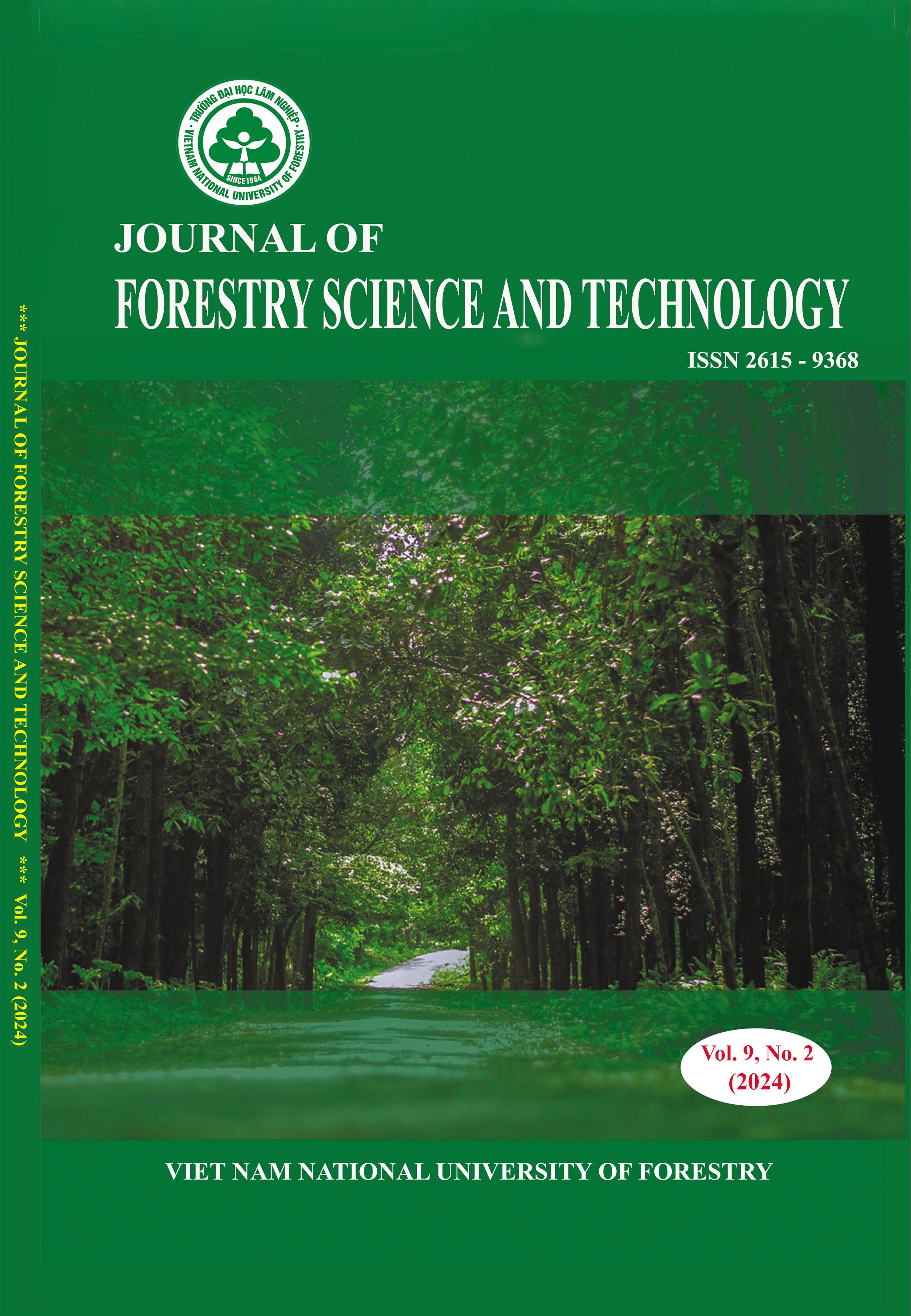The short-term aging effects of Polyvinyl Chloride (PVC) and Nano Silica (NS) as modifiers on asphalt binders
DOI:
https://doi.org/10.55250/Jo.vnuf.9.2.2024.107-116Keywords:
Asphalt binder, dynamic shear rheometer, Nano Silica, Polyvinyl Chloride, short-term agingAbstract
Many studies have shown that for a pavement paved with an asphalt-aggregate mixture, to achieve its design life, the asphalt mustn’t age too hard during storage, during the production process, or while on the road. The short-term aging effects of Polyvinyl Chloride (PVC) and Nano silica (NS) as modifiers on asphalt binders were investigated. The physical properties, penetration, softening points, viscosity measurements, dynamic shear rheometer (DSR), and multiple stress creep recovery (MSCR), under the aging conditions of unmodified and modified asphalt were determined for various PVC and NS contents. To simulate the aging in a short term in the laboratory, the rolling thin film oven test was conducted. Obtained results indicated that adding 5% PVC and 1% NS had a significant positive effect on the aging resistance of asphalt binder through increasing 59.49% penetration aging ratio (PAR) values. It was also observed that adding PVC and NS reinforced the aging resistance of the asphalt binder. Nevertheless, adding PVC and NS reduced softening point increment (SPI), viscosity aging index (VAI), as well as rutting factor aging index (AIR). The asphalt binder modified with PVC/NS demonstrated better performance compared to the asphalt binders only modified with PVC or NS. The results of this study demontrate the feasibility of applying the PVC/NS combination treatment to asphalt in practical applications.
References
. Alaaeldin A. A. A. & Cheng P. F. (2019). “Laboratory evaluation of the effects of short term aging on high temperature performance of asphalt binder modified with crumb rubber and rice husk ash”. Petroleum Science and Technology.
Doi: 10.1080/10916466.2019.1590409.
. Ambika B., Girish S. & Kumar G. (2014). A sustainable approach: “Utilization of waste PVC in asphalting of roads”. Construction and Building Materials. (54): 113–117.
Doi: 10.1016/j.conbuildmat.2013.12.050.
. Amer M., Mohammad R. S., Massoumeh A., & Alireza K. K. (2019). “Laboratory evaluation of the effects of short term aging on high temperature performance of asphalt binder modified with crumb rubber and rice husk ash”. Petroleum Science and Technology.
Doi: 10.1080/10916466.2019.1590409.
. Arabani M. & Taleghani M. Y. (2017). Rutting behavior of hot mix asphalt modified by polyvinyl chloride powder. Petroleum Science and Technology. 35(15): 1621-1626.
Doi: 10.1080/10916466.2017.1336772.
. Fang C. Q., Liu X. L., Yu R. E., Liu P. & Lei W. Q. (2014). Preparation and Properties of Asphalt Modified with a Composite Composed of Waste Package Polyvinyl chloride and Organic Montmorillonite. Journal of Materials Science & Technology. 30(12): 1304-1310.
Doi: 10.1016/j.jmst.2014.11.001.
. Hao G. R., Huang W. D., Yuan J., Tang N. P. & Xiao F. P. (2017). Effect of aging on chemical and rheological properties of SBS modified asphalt with different compositions. Construction and Building Materials. (156): 902-910.
Doi: 10.1016/j.conbuildmat.2017.06.146.
. Hu J. X., Wu S. P., Liu Q. T. & Zeng W. B. (2018). Effect of ultraviolet radiation on bitumen by different ageing procedures. Construction and Building Materials. (163): 73-79. Doi: 10.1016/j.conbuildmat.2017.12.014.
. Shi X. G., Cai L. C., Xu W., Fan J. & Wang X. H. (2018). Effects of nano-silica and rock asphalt on rheological properties of modified bitumen. Construction and Building Materials. (161): 705-714.
Doi: 10.1016/j.conbuildmat.2017.11.162.
. Zhang H. L., Zhu C. Z., Yu J. Y., Shi C. J. & Zhang D. M. (2015). Influence of surface modification on physical and ultraviolet aging resistance of bitumen containing inorganic nano-particles. Construction and Building Materials. (98): 735-740.
Doi: 10.1016/j.conbuildmat.2015.08.138.
. Ramez A. A. M., Amiruddin I., Riza A. O. K. R., Muhamad N. B. & Cai L. (2017). The performance of Epoxidised Natural Rubber modified asphalt using nano-aluminaas additive. Construction and Building Materials. (89): 912-920.
. Mahmoud E. & Aboelkasim D. (2017). Characteristics of asphalt binder and mixturecontaining nanosilica. International Journal of Pavement Research and Technology. Doi: 10.1016/j.ijprt.2016.11.009.
. Nguyen Hoang Phong, Cheng P. F. & Nguyen Tat Thang (2021). Properties of Stone Matrix Asphalt Modified with Polyvinyl Chloride and Nano Silica. Polymers. (13): 2358.
Doi: https://doi.org/10.3390/polym13142358
. Iqbal M., Hussain A. & Khattak A. (2020). Improving the Aging Resistance of Asphalt by Addition of Polyethylene and Sulphur. Civil Engineering Journal. (8): 1017–1030.
. Wróbel M., Woszuk A. & Ratajczak (2021). Properties of reclaimed asphalt pavement mixture with organic rejuvenator. Construction and Building Materials. (56): 123-130.
. American Association of State and Highway Transportation (2019). Standard Method of Test for Multiple Stress Creep Recovery (MSCR) Test of Asphalt Binder Using a Dynamic Shear Rheometer (DSR).









